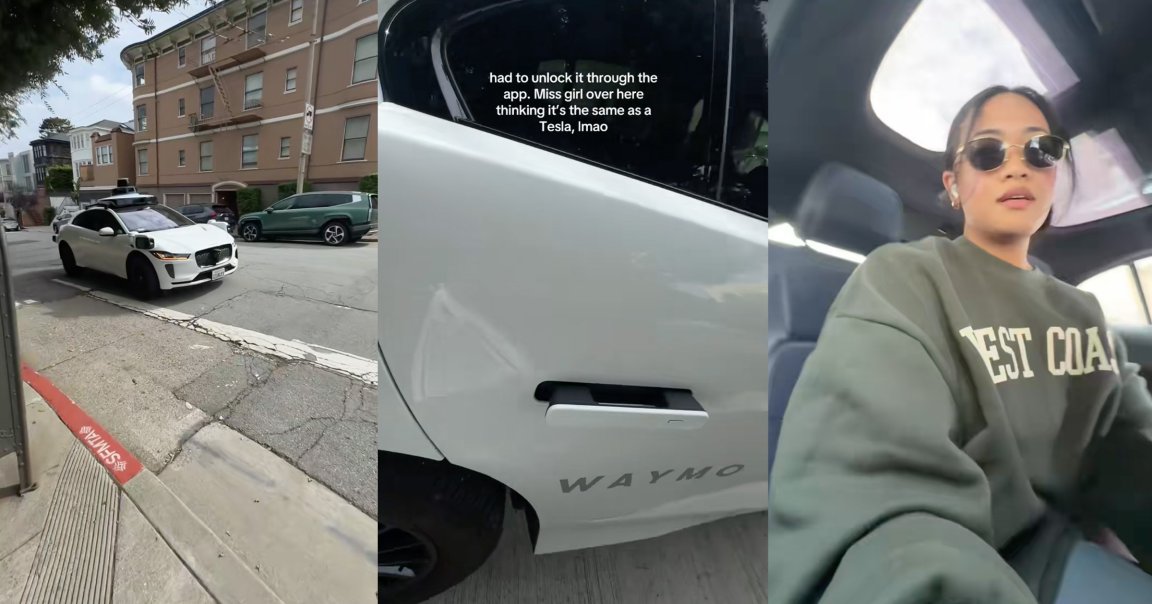
It’s a tech CEO’s wet dream, but a labor economist’s worst nightmare: to film some content for a TikTok reel, one San Francisco woman decided to hail a Waymo to complete her Doordash delivery.
The TikTokker, real name unknown but who goes by the handle @dmpnzzz, posted the minute-long clip last Thursday. She doesn’t say much about the finances of the experiment, but the clip does raise an interesting question: can you Doordash in a Waymo and still come out ahead?
Curious to find out, InsideEV’s Chad Swiatecki did some back-of-the-envelope math to see if the unholy Frankenstein of gig economy services makes financial sense. The short answer? It all depends on three variable factors: the Waymo fare, the distance, and the tip.
Waymo doesn’t publicly declare its fares, instead locking them behind a black box surge-pricing model — yet another sign of whatever stage of capitalism we’re in. Doordash fees are likewise highly dependent on time, city, and tips, with base pay for delivery drivers hovering around the $2 per delivery range before tip.
Those unknowns in mind, Swiatecki estimated that a “short, tip-heavy delivery that happens to align with a cheap, quick Waymo ride” will probably work out. Any order requiring a Doordash worker to trek across town will probably end in the red.
Either way, the thought experiment might be beside the point. Doordash just spent buttload of money unleashing a fleet of apparently road-safe delivery robots onto Phoenix, which it calls “Dot.” As Swiatecki ponders, “if the economics are squishy, the symbolism is crystal-clear: Automation is bleeding into the last mile of gig work.”
More on Doordash: Dystopia Intensifies as Startup Lets You Take Out a Micro-Loan to Get Fast Food